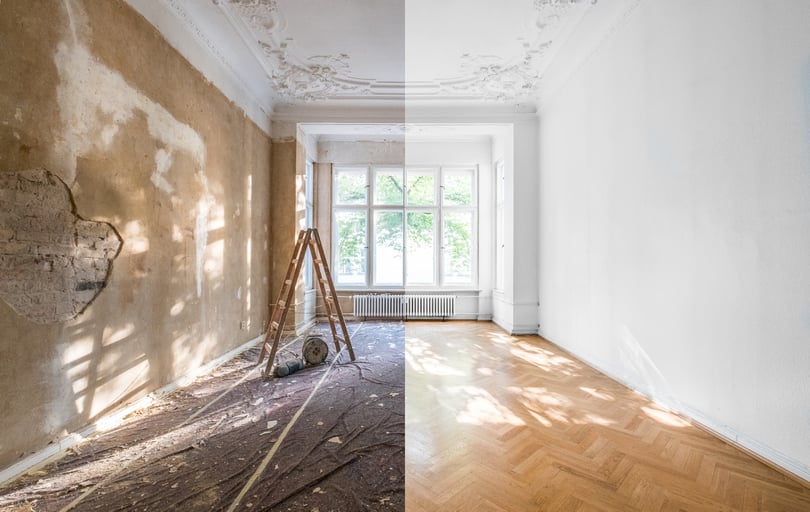4 House Flipping Tips You Need to Know

4 House Flipping Tips You Need to Know
“House flipping” is not normally a practice that property managers engage in. The buying of a home for cheap, renovating it to increase its value, and then selling it for a profit is a bit too much of a gamble compared to being able to make a steady income off of the property by renting it out.
However, there are situations where a property manager may need to sell a rental property quickly. For example, a rental property may be located in an area that is going into decline, and getting it off the books before the current renters leave can help prevent a loss. Or, a sudden shift may occur in the market soon after a property is purchased which lowers its value as a rental property (or an expected shift may not occur, such as a major employer cancelling plans to open an office or other facility in the area).
In such cases, a property manager will need to hone their house selling skills and flip the property quickly before it can become too much of a drain on resources.
House Flipping Tips for Property Managers
To help you sell a residential rental property in such an emergency, here are a few house flipping tips to follow.
#1) Establish the Estimated Cost of Your “Flip”
In an article for Fit Small Business, John Myers, the owner of Myers & Myers Real Estate, states that:
“The first step in flipping a house is to understand the numbers. One of the most important numbers is to determine how much is the estimated cost of your fix-and-flip. You may have to pay real estate commissions and certain closing costs. Calculate all possible costs involved, including property taxes, utility costs, insurance, interest… and other related expenses.”
Even for property managers engaging in house selling to offload a rental property that either isn’t performing up to par or is in a market facing a downturn, there will be numerous costs that have to be calculated. Knowing what these costs are ahead of time helps establish what the minimum acceptable sale price should be in order to turn a profit.
#2) Verify Local Market Conditions
Selling a home is a complicated process, but one basic piece of advice that many experts recommend is to study the local market before engaging any turn services or trying to sell the residence. In particular, it helps to study:
- What similar homes are selling for in the area;
- What amenities other houses have;
- How long other homes tend to stay on the market; and
- The total percentage of occupied homes in the area.
For a typical house flipping job, these are factors that are looked at before acquiring the property. However, when a property manager is trying to offload a home, this research is necessary for making the property they have as attractive to potential buyers as possible.
It may be necessary to undercut other homes in price or to install additional amenities to make a home more attractive to a potential buyer—especially in a market that is in decline with many homes sitting on real estate sites for months or years before being purchased.
When setting prices or selecting upgrades, it’s important to consider how much the price cut/upgrade will cost and to balance that cost against the projected losses that would be incurred if the property isn’t sold quickly—such as from property taxes, property maintenance, HOA fees (where applicable), utilities, etc.
Knowing the local market, and particularly local demographics, can help to optimize the home renovation process used to prep the house for sale.
#3) Avoid Making Unnecessary Improvements
For any given turn service or home renovation that is considered during the house flipping process, it is important to ask some questions:
- Is this improvement necessary to flip the house?
- Will this improvement significantly increase the likelihood of sale?
- Does this improvement add more value to the home than it costs in time, labor, and materials?
If the answer to all of these questions is “no,” then the improvement is probably a waste of money that could be better spent elsewhere. Avoiding unnecessary upgrade costs helps to maintain profitability at the time of sale by minimizing house flipping costs—and ensures there’s some room in the budget for the inevitable unforeseen issue that needs fixing.
Focusing on smaller or less costly upgrades (such as replacing lights or applying a fresh coat of paint) that significantly improve the value and/or attractiveness of the property help improve profitability more when selling homes than extravagant, but unneeded, remodels. Large-scale or costly home renovations should be saved for items that are required to meet local building codes.
Related: How a Mobile App Helps You Find Home Improvement Professionals
#4) Market the Property Effectively
It doesn’t do much good to rebuild a property for sale if nobody knows it’s on the market. Some guidelines for marketing a property include:
- Highlighting Features That Mesh with the Local Market. When creating marketing materials and descriptions of the property for real estate ads, it’s important to highlight the features of the property that buyers in that market would consider desirable.
- Take Lots of Photos. Pictures of the interior and exterior of the property can show off how well-maintained it is and highlight important upgrades. Many buyers will be more motivated by photos than by text descriptions, as it gives them a glimpse of the property’s overall condition.
- Use Real Estate Listings and Social Media. Online real estate sites such as Zillow or Trulia have become an indispensable part of the house flipping/sale process. However, social media sites such as Facebook or Pinterest can also be effective for promoting a house for sale. In fact, creating a gallery of images on Pinterest showcasing the property maintenance/home renovation process the building was put through can help create a story that garners attention.
4 Bonus House Flipping Tips
Over the course of this post, you may have noticed that while market research is mentioned as a means of identifying upgrades that can help you sell your rental properties, there is no advice for choosing a house to flip.
That is because this article is meant to serve as a resource for property managers who need to get a property off of their books to prevent losses from keeping a vacant or underperforming property. So, it skips many of the most common pieces of advice for choosing a property to flip.
If you are thinking about flipping properties as a side business to property management, some tips for picking houses to sell include:
- Inspecting every property before committing to a purchase;
- Looking for properties where small upgrades or minor property maintenance can drastically increase the value;
- Studying the local market to see what sells and finding a property that can be upgraded or renovated to match; and
- Starting small when entering the house flipping industry.
Find Service Providers for Your Flip
Basic property maintenance services can play a key role in house flipping. Homee On Demand provides immediate property maintenance services that provides property managers and owners with qualified and background-checked home service providers for almost any property maintenance issue in minutes. Simply take some photos, describe what you need done, and send the request. In many cases, a maintenance tech will arrive in as little as half an hour.
HOMEE’s network of thousands of service providers can tackle common tasks associated with flipping or turning a property including:
- Interior and exterior patching and painting
- Door knobs, cabinet hinges and pulls replacement
- Removal or installation of new faucets, sinks, toilets, and tubs
- Carpet cleaning, removal and/or installation
- Outlet repair
- Landscaping and yard work
- Power washing
- HVAC filter changes
- Smart Home device installation
Want to know more about how to use property maintenance services to help with house selling? Reach out to the HOMEE team today!




